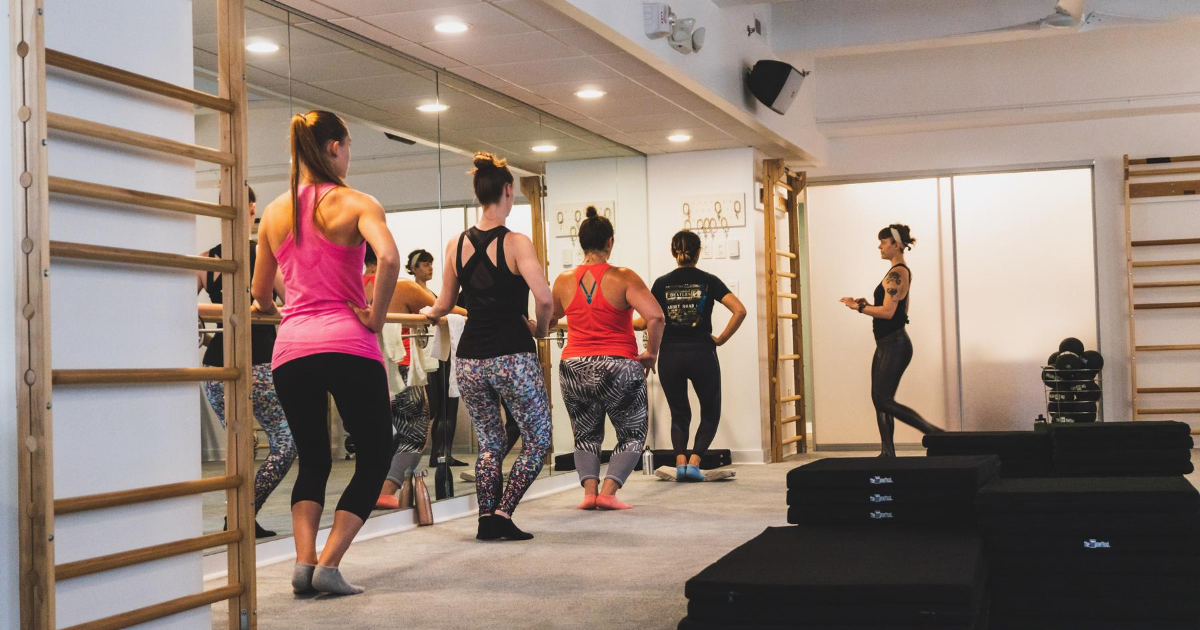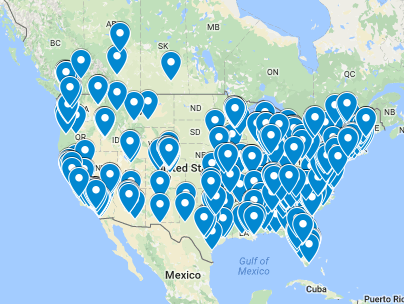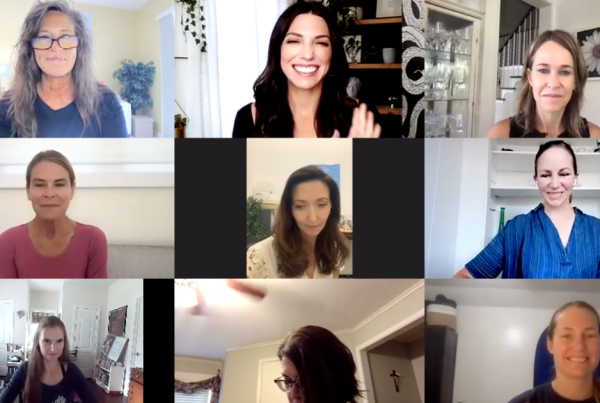When you think about it, one of the first interactions you have with a new fitness studio involves legal paperwork. One of the first things owners or administrative staff will have you sign is a legal waiver. It often includes paragraphs of jargon that you quickly skim over, but have you ever stopped to think about what you’re signing? If you’re a client who instructs, how do you make sure that what you’re learning in class and then teaching elsewhere isn’t stepping on any toes? If you’re a studio owner, do you know what all your rights are, and how to protect yourself?
Since I can’t help answer those questions, I turned to lawyer extraordinaire and self-proclaimed fitness enthusiast Caroline Mankey, a partner at Akerman LLP. Below is a full interview I did with her to help us break down everything from intellectual property laws when it comes to exercises to reposting other feeds’ social media content. Before we jump in, here is the legal disclaimer!
This is not legal advice. This is a general discussion about legal concepts that apply in some, but not all, jurisdictions and circumstances. Caroline recommends seeking the advice of legal counsel in your jurisdiction to advise you specifically on the law applicable in your jurisdiction and to your unique circumstances.

What protections do you have when it comes to exercises, class formats and choreography?
Melissa: How do studio owners protect their classes from being stolen?
Caroline: This is very difficult to do using intellectual property laws. Copyright law protects creative works. However, copyright law does not protect ideas. It protects the creative expression of ideas, but only where the expression is in a tangible form, such as a book, video, sound recording, photograph, painting or sculpture. Works that are not recorded tangibly (such as a poem or play that is recited audibly only, or exercise sequences taught in a classroom, and not written, recorded or video recorded) are not protected.
The following are examples of works that are protected by copyright:
-
-
- a book about Pilates (Ross-Nash v. Almond, No. 219CV00957APGNJK, 2020 WL 6947691, at *1 (D. Nev. Oct. 28, 2020))
- a choreographed dance routine (17 U.S.C. section 102(a)(4)), which is comprised of dance steps, dance movements, and/or dance patterns (Pellegrino v. Epic Games, Inc., 451 F. Supp. 3d 373, 388 (E.D. Pa. 2020))
-
The following are examples of work that copyright does not protect:
-
-
- a sequence of yoga poses and breathing exercises (Bikram’s Yoga College of India, L.P. v. Evolation Yoga, LLC, 803 F.3d 1032 (9th Cir. 2015))
- meditation exercises (Palmer v. Braun, 287 F.3d 1325 (11th Cir. 2002))
-
Melissa: Sounds like the lines are pretty blurred.
Caroline: The line between what is protected choreography and what is simply exercise that is not protected can potentially be blurry. Barre exercise, however, can be analogized to ballet. Individual ballet moves and poses are not protected by copyright. Even a sequence in which the poses are taught is not protected by copyright. It is not until the poses are combined in such a way as to create an original and unique work, such as The Nutcracker, and recorded in a tangible form of expression, that the sequence is protected as a choreographed routine.
Another method to legally protect an exercise routine would be to enter into contracts requiring students not to teach the exact sequence that the studio owner teaches. This presents multiple problems, however. First, will your students agree to sign such an agreement? Teacher trainees might, but class students might not. Also, how do you police it? It’s difficult to track what others are teaching, particularly outside your area. Finally, how do you enforce it? It would be prohibitively expensive to file lawsuits against other teachers and studios.
Ultimately, the best way for a studio to protect its classes is to be the best at what it teaches and offer a safe and beautiful space, and a supportive and positive environment that keeps people wanting to come back, even if a competitor is teaching the same material elsewhere.
Melissa: How do studio owners know to the best of their ability that their choreography is not infringing on anyone else’s?
Caroline: It’s unlikely that studio owners would be infringing on any other studio’s rights in the sequences, since exercise sequences (whether yoga, barre, Pilates, or others) are not protectable through intellectual property laws. Unless the studio owner has entered into any agreements prohibiting their use of certain material, then the studio and its teachers are free to teach any material they want.
Melissa: What recourse does a studio owner have if they think their work is being taken without permission? For instance, a former student teaching elsewhere with the same materials and class formats the studio taught them?
Caroline: If a former student is using a studio owner’s actual written or recorded materials, such as class handouts, worksheets, workbooks, audio or video lectures or videotaped sequences, then the studio owner might have a claim against the former student for infringement of the copyrights to those materials. But just teaching the same subject matter and/or in the same style is not prohibited.

Working out while studying for a Barreworks certification.
Photo credit: instagram.com/barreworksto
What to know about photography and promotional materials
Melissa: If a studio is hiring a photographer to take promotional photos for marketing materials including social media, are there any general guidelines that they should be aware of? For instance, what is the proper way to credit the photographer?
Caroline: A photographer owns the copyrights to the photographs they shoot. Purchasing the photos does not necessarily transfer the copyrights unless there is an express written agreement to transfer the copyrights to the purchaser. You should always have a clear written agreement with every photographer stating expressly:
- Who owns the copyrights to the photos
- How the party who does not own the copyrights may use the photos in the future
- For how long the photos may be used
- Whether the party who does not own the copyrights may give other third parties permission to use the photos (such as if a magazine asks you for your headshot or photos of your studio for use in the magazine)
- What credits must be given to the photographer for approved uses
- How the parties will respond to requests to use the photos in ways not addressed by the contract
- Payment terms
- What the consequences are for unapproved uses of the photos
- Any other terms that are important to the parties
What are your rights when it comes to social media content?
Melissa: What should studio owners and the people doing their social media know about posting other people’s content?
Caroline: Posting someone else’s content is risky. Someone owns the copyright to every photograph. For example, there are lawsuits all the time by paparazzi photographers against celebrities who post a paparazzi photographer’s photo of the celebrity on the celebrity’s social media page. If you did not take the photograph, or buy the copyright with a written contract, you do not own the copyright and your use of the photo could expose you to liability for copyright infringement.
Melissa: What about if you credit them on Instagram?
Caroline: You should always seek permission to use someone else’s photograph or other content.
Melissa: What do you suggest if another studio is re-posting your photos or creative without crediting you?
Caroline: If someone is using your content, and your content is original and wholly owned by you, then you could have a valid copyright infringement claim against the party using your material. In order to file suit, you first need to register your copyright with the U.S. Copyright Office, which is pretty easy and inexpensive to do online at copyright.gov. Filing lawsuits is very expensive and is a very slow and labor-intensive process.
Melissa: What if you just want someone to stop reposting your content who isn’t crediting you?
Caroline: If you simply want the other person to stop using your material, the best approach is to start with a letter explaining that their use of your materials is copyright infringement in violation of federal law and asking them to stop and to take down all copyright protected materials of yours. Usually, a letter from a lawyer is more effective than a letter from a non-lawyer. Also, you don’t want to misstate your position when you are asserting your legal rights, so I recommend seeking the advice and assistance of a lawyer if you think your protected materials have been used without your permission.
In conclusion, copyright can be a tricky thing to navigate. The barre world is filled with stories of people stepping on each other’s toes. Just look into the history of barre and you’ll find countless stories of deceit, terribly-written legal contracts, and copycats.
We don’t want you to go down the wrong path, so when in doubt it’s always best to check with a lawyer first if you can.







